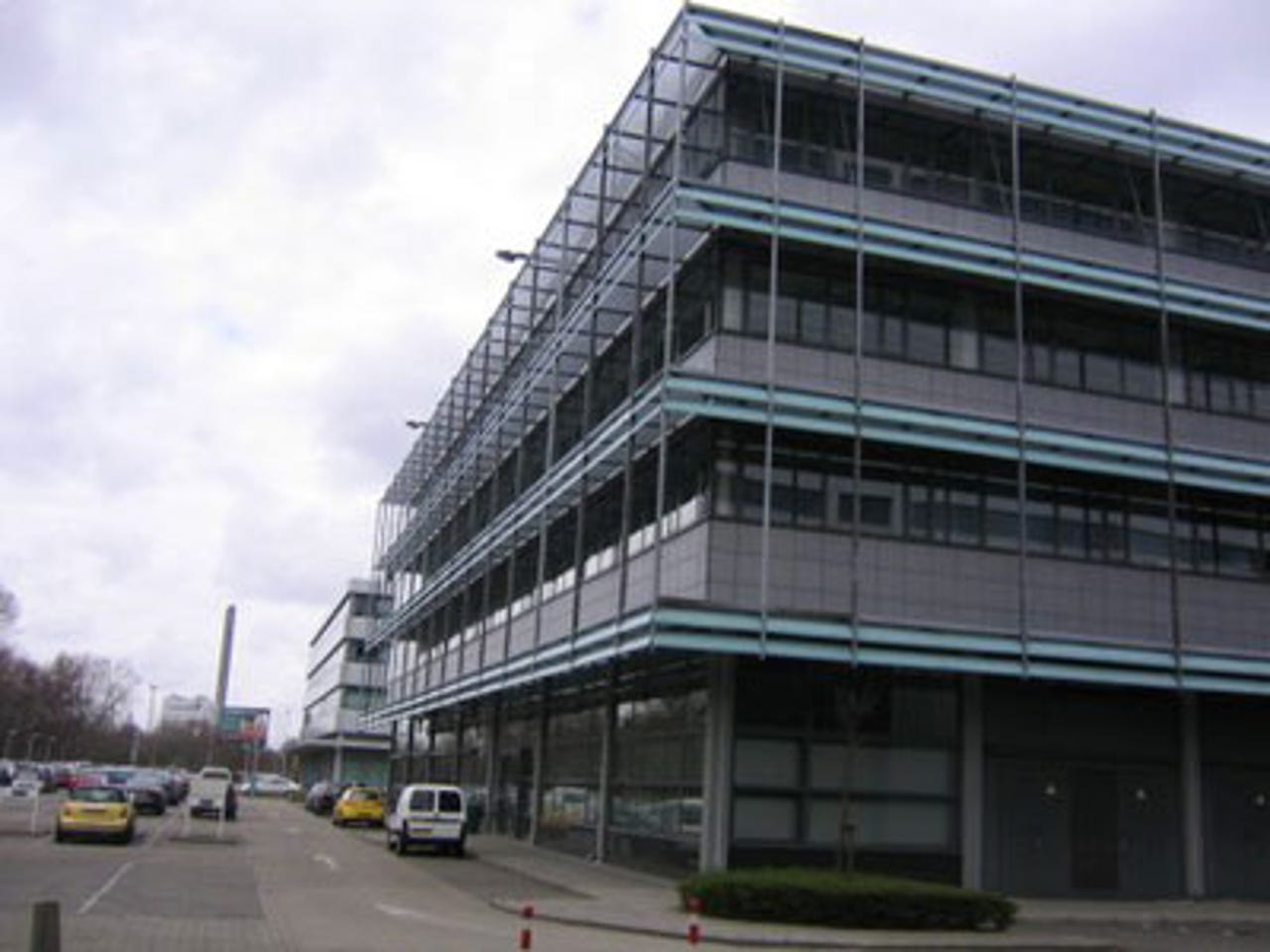Photos: Inside Cisco's European datacentre


This anonymous building, tucked away in a side street close to Dell's Amsterdam office, is Cisco's European datacentre.
Like any company, Cisco faces many of the usual challenges in running a datacentre, including constant pressure to reduce budget while requirements grow and headcount is frozen, and dealing with multiple operating systems, heterogeneous platforms, changing requirements and poor resource allocation.
But as the giant of the networking world, Cisco should also some have unique advantages.
The Amsterdam facility has a fairly empty car park, an indication of the way that Cisco likes to run it. This is not a site with a lot of people and, as one of the site's managers points out, is "really close to a 'lights out' operation".
Cisco relies on six data centres worldwide, but they are not particularly well spread geographically. Four of the facilities are in the US, and three of those are clustered not far from Cisco's worldwide headquarters in California. There is one in Australia, which is run from the US.
If clustering your datacentres close to the San Andreas fault does not show the greatest foresight, then building the only data centre covering Europe, the Middle-East and Africa in the one country in Europe that is barely above sea-level fits in with that corporate strategy. Floods and earthquakes do not worry Cisco too much.
Around the world, along with its data centres, Cisco has ten engineering/server rooms in 11 countries, covering ten time zones.
Cisco's Amsterdam data centre reflects the way the wider company works. The machine room here matches other Cisco facilities in its mix of servers. Cisco is a big user of Linux and Unix. Worldwide, 37 percent of its servers run Linux, 36 percent Solaris and two per cent run HP-UX. The rest run Windows.
Like other companies, the demand on Cisco's data centre is largely split between expanding various parts very quickly, and consolidating and simplifying the way the data centre works.
In the main machine room here there is empty space, and more and
more of it. Primarily, the space is freed up because of storage
consolidation. Storage arrays are getting smaller in physical size,
even as they balloon in capacity.
In 2001, Cisco Amsterdam had just
over 520TB of data storage and the vast majority of it was
direct-attached storage (DAS). As of 2005, Cisco now has 4.2PB of
storage; less than 400TB is in DAS, 2PB are now in SANs and 1.5PB are in NAS.
Similar consolidation in servers, especially with the move to virtualisation, has freed up more than 30 per cent of the floor space at Cisco Amsterdam.
Cisco had invited the European press to Amsterdam to see the launch of the company's MDS 9513 storage switch. The company has long targeted the lucrative storage market as a key area for growth and the 9513 certainly has plenty of growth potential.
It is shown here as a two-slot system undergoing testing at Cisco's Amsterdam facility.
Minimally configured in terms of size — as a small rack size it can take up to 192 Fibre Channel ports — the 9513 is flexible and also has hardware encryption compression.
Fully configured, the top-end MDS 9513 switch will carry 528 ports, which can be a mix of 1Gbps, 2Gbps, 4Gbps and 10Gbps Fibre Channel connections.
At the launch on this new switch last Monday, Cisco also announced four new switch modules. Three of the new switching units can have speeds of 1Gbps, 2Gbps or 4Gbps and come with 12, 24 or 48 ports. There is also a top-end unit that comes with four 10Gbps ports.
This top-end switch is aimed at "inter-switch communications, where you are linking together two SANs, and applications across metropolitan switches," according to Dante Malagrino, Cisco's senior manager for data centre systems.
Try and spot the disk drives. The empty space below the twin system units give the clue — there are no disk drives. These are two HP servers running fully virtualised at Cisco’s Amsterdam facility.
As part of its developing data centre strategy, Cisco has completely revamped its infrastructure. Where it once used only dedicated computers and storage it has now moved to pooled resources — systems and storage are shared, making for a more flexible infrastructure where components can be dynamically re-allocated as requirements change.
But even pooled resources have to be allocated and re-allocated as needs change.
The next step is to move to a virtual architecture where servers and storage only exist virtually and can then allocated dynamically to where they are needed. Virtualisation is close to Nirvana for the IT manager. Just pick the required resource allocate across the network and they can settle into their new virtual home and begin work instantaneously.
That is the theory at least, and one that Cisco is putting into practice. According to Cisco’s IT manager for data systems in Europe, Bob Stemmerik, Cisco has virtualised nearly all its own applications. The biggest advantage? Speed.
"84 percent of our virtual machines are delivered and configured in under a day," Stemmerik said. "100 percent in less than five days."
As part of its revamped infrastructure strategy, Cisco is installing cabling in a new way. As the emphasis is on flexibility in an architecture moving towards full virtualisation, it makes sense to make the cabling flexible too.
Traditional data centre cabling runs under the floors and most IT professionals will admit that the biggest pain in moving systems is moving the cabling. Cisco now runs cables over rather than under the floor, in the yellow ducts shown here.
This makes it easier to re-configure the room’s devices and makes everything easier to see. It looks odd, but IT staff who are spared from having to scramble around floors tugging cables through conduits are unlikely to complain about aesthetics.
Another benefit is in heat distribution. Data centres run hot in certain parts and cool in others, which leads to poor heat distribution. According to Cisco’s managers, finding power is not a problem but dissipating its by-product, heat, is. Cables that run over, now under, data systems are now recommended as better distributor of heat.
Now, who said that cabling was boring?
Sun once dominated Cisco's data centres. If Cisco was "the" networking company then Sun has always considered itself "the" networked computer company, creating a marriage that has flourished for years.
Sun is still the system of choice at Cisco; look in any of their data centres and you will see a sight that would make Sun chief executive Scott McNealy very happy.
But in today’s heterogeneous IT world, there will always be other players. For Cisco, the emergent technology has been Linux which is now the second-most-used operating system at Cisco, often running on IBM hardware.
Barriers are also being broken down by the rise of virtualisation, which is separating the OS from the hardware and freeing IT managers from the strictures they imposed. Given freedom of choice like that, will Cisco stay loyal to Sun?